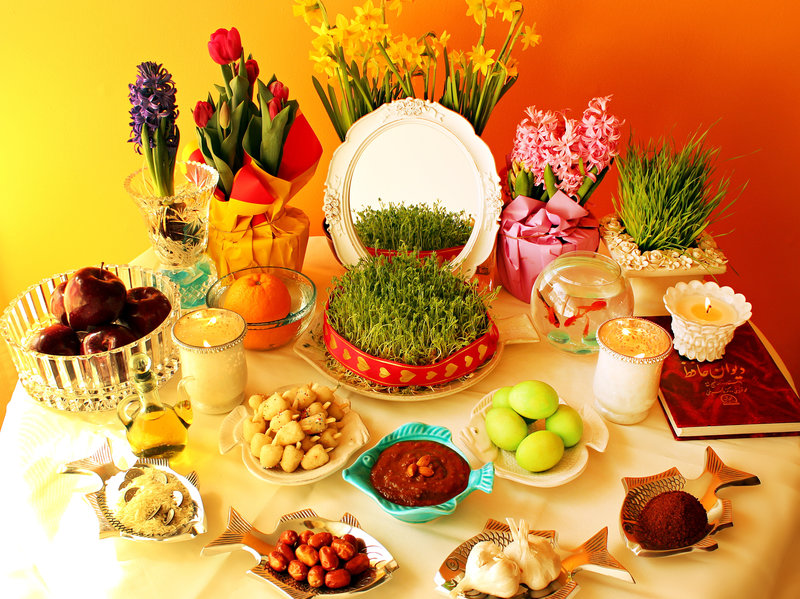Kourosh Ziabari – openDemocracy: Nowruz has always been a very special occasion for me; a time of year when my heart beats faster than usual, when I’m more inclined to see everything through more romantic eyes.
It is a time when I think about the importance of nature and why it should be preserved at the dawn of spring, while food packaging companies, nuclear power plants, oil tankers and coal mines don’t agree with me; why families entrap themselves in unnecessary clashes and skirmishes throughout the year to finally use Nowruz as an opportunity for reconciliation.
Nowruz, for me is an opportunity to contemplate, to ask unanswered questions and sometimes create some of my best works of journalism and writing. It is also a chance to revisit myself and look at what I’m doing wrong. But it is also one of the few moments of the year when I can smile sincerely.
Nowruz, is a celebration that takes place on the day of vernal equinox, both to celebrate the Persian New Year and to reignite the flames of friendship, happiness and liveliness in a region boiling with internal power struggles, instability and foreign intervention.
Literally meaning “new day”, Nowruz is a two-week-long festival, celebrated by some 300 million people in as many diverse countries as Iran, Afghanistan, Albania, Azerbaijan, Georgia, Pakistan, Tajikistan, Turkey, Turkmenistan and Uzbekistan. The Iranian diaspora in Europe and the United States enshrine Nowruz as dearly as Iranians do at home, and other nations in what is popularly referred to as the Middle East and North Africa, as well as countries in Central Asia, join them in celebrating. The rite dates back to at least the 6th century BC, marking the arrival of spring, and has been on UNESCO‘s Representative List of the Intangible Cultural Heritage of Humanity since 2009. The United Nations General Assembly proclaimed 21st March International Nowruz Day.
In Iran, the Nowruz festival is characterised by an elegant, stylish and intricately designed table setting prepared a few hours before the equinox, and called “haft seen.” Items on this table have names, which in the Persian language start with a letter resounding “S”, and “Haft” means seven, imaginably an auspicious number in Iran’s folk culture and many other ancient cultures: Samanu pudding, oleaster, garlic, coins, red apple, hyacinth flower, sumac, vinegar, and mug bean or lentil sprouts. There are more things on this table as well: a holy book, either Quran or Avesta, a major book of Iranian poetry, painted eggs, mirror, goldfish in a glass bowl and small candies and sweets.
Each of these items can be associated with certain values and carry meanings that are rooted in the desire for enjoyment, good luck and achievements for the year to come, while leaving the bad omens, malicious and unpleasant moments of the preceding year behind.
Families gather around the table, pray silently for the wellbeing and happiness of their beloved ones in the forthcoming year, and that precisely calculated moment, which is marked by fireworks and explosives introduces the new year. Exchanging gifts, paying visit to the elderly, paying tribute to the dead, donating to charities and sightseeing are common activities as well. Haft-seen is normally unloaded on the 13th day of the new year.
Nowruz, like Christmas, is supposed to be a harbinger of unity, peace and love. But it has the potential to be a source of disagreement and conflict. In my country Iran, with a constitution which has remained unchanged and unmodified since 1979, with youths and aged politicians and inflexible leaders who don’t completely understand each other and interpret things in fundamentally incongruous ways, Nowruz is also a reason for big disagreements. Some authorities tend to believe Nowruz is not sufficiently “Islamic” to be valued, treasured and celebrated widely and loudly.
A small minority in the government say it’s a typical representation of Iranian culture and shows how harmony and peaceful coexistence works, and therefore needs to be protected.
Sometimes, religious figures issue fatwas against Nowruz and its related festivities and sometimes there are crackdowns on its public manifestations. It happens that an ultra-conservative president spends millions of dollars, lavishly, on celebrating Nowruz and invites leaders from different countries to join his fête, and sometimes, even a congratulatory message on the occasion of the Persian New Year by his moderate successor creates a challenge.
Sometimes, there are disagreements about the origins of Nowruz between peoples and countries who celebrate it, each claiming it as “theirs” as happens with important poets, scholars, writers or even sports in the region.
All in all, Nowruz has survived the passage of time, clashes between politicians and ideologues who sometimes adopt it because it gives them legitimacy in the eyes of a population thirsty for an end to the confrontation of religion vs. national identity as opposing forces, and sometimes reject it because it doesn’t serve their leadership purposes.
It’s perhaps time for Nowruz to be an occasion for the ordinary Iranians and all of those who share it to celebrate, smile and feel happier than the rest of the year. Comprehending the value of a festival that has weathered so many storms is not easy. That’s why Nowruz is cherished. Nowruz Mubarak!
This article was originally published on openDemocracy.

